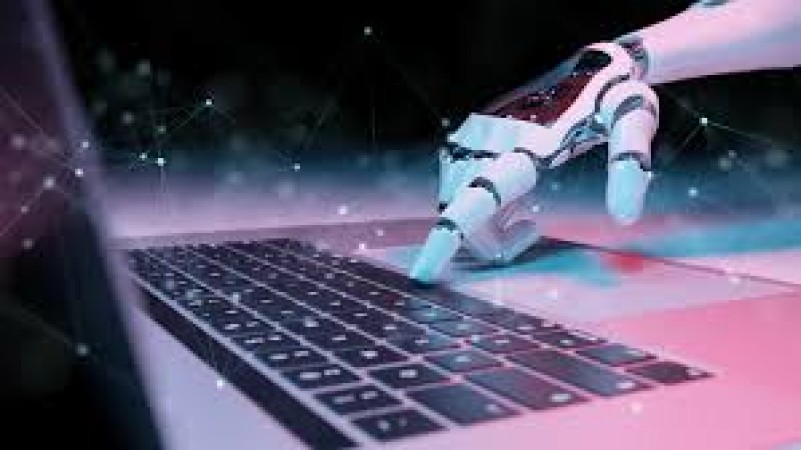
OpenAI, a trailblazer in the field of artificial intelligence (AI), has adopted a comprehensive approach to train its AI models, encompassing various methodologies and data sources. Among these strategies, recent findings suggest that OpenAI is leveraging YouTube, the world's leading video-sharing platform, as a pivotal source of training data.
Diverse Data Sources
YouTube: A Treasure Trove of Data
YouTube stands out as an unparalleled repository of multimedia content, offering a vast array of videos covering a multitude of subjects, genres, and languages. With millions of users uploading content regularly, YouTube serves as a dynamic platform reflecting the diverse interests and behaviors of people worldwide.
Vast Repository
YouTube's extensive library encompasses an eclectic mix of content, ranging from educational tutorials and entertainment shows to product reviews and cultural documentaries. This diversity not only caters to a wide audience but also presents a rich tapestry of human experiences and interactions.
Rich Diversity
The richness of YouTube's content lies in its ability to capture real-life scenarios, cultural nuances, and evolving trends. Whether it's a tutorial on coding, a travel vlog exploring exotic destinations, or a music video showcasing artistic expression, YouTube offers a glimpse into the myriad facets of human culture and creativity.
Real-World Context
The videos hosted on YouTube provide valuable insights into real-world phenomena, behaviors, and societal dynamics. From everyday conversations and social interactions to global events and historical moments, YouTube serves as a digital archive documenting the collective experiences of humanity.
Training AI with YouTube Data
Data Acquisition and Preprocessing
In harnessing YouTube as a training data source, OpenAI employs sophisticated algorithms to collect, filter, and preprocess the vast troves of video content available on the platform. This involves automated processes for data collection, ensuring relevance, diversity, and quality in the selected videos.
Data Collection
OpenAI's data collection algorithms are designed to scour YouTube's extensive database, selecting videos based on predetermined criteria such as topic relevance, viewer engagement metrics, and content diversity. This meticulous approach helps curate a representative dataset for training AI models.
Annotation and Labeling
Once the data is gathered, it undergoes annotation and labeling processes to enhance its utility for AI training. Annotations may include metadata such as timestamps, video descriptions, and user-generated tags, while labeling involves categorizing videos into distinct classes or topics for supervised or semi-supervised learning.
Model Training and Optimization
Deep Learning Frameworks
OpenAI leverages state-of-the-art deep learning frameworks such as TensorFlow and PyTorch to train its AI models on the curated YouTube dataset. These frameworks provide powerful tools for building and fine-tuning neural network architectures tailored to tasks such as image recognition, natural language processing, and video understanding.
Neural Network Architectures
Advanced neural network architectures, including convolutional neural networks (CNNs) and recurrent neural networks (RNNs), are instrumental in extracting meaningful features and patterns from YouTube videos. CNNs excel at analyzing visual content, while RNNs are adept at processing sequential data such as speech or text.
Iterative Improvement
The training process is iterative, involving multiple cycles of model training, evaluation, and optimization. During each iteration, the AI model learns from the training data, adjusts its parameters based on feedback, and refines its predictions to improve performance gradually.
Challenges and Considerations
Ethical and Privacy Concerns
Content Moderation
Ensuring that the training data adheres to ethical guidelines and community standards presents a significant challenge, particularly given the sheer volume and diversity of content on YouTube. OpenAI employs content moderation strategies to filter out inappropriate or sensitive material, safeguarding the integrity of the training dataset.
Privacy Protection
Protecting the privacy rights of individuals featured in YouTube videos is paramount. OpenAI implements stringent privacy protocols to anonymize personal information and adhere to data protection regulations such as the General Data Protection Regulation (GDPR) and the California Consumer Privacy Act (CCPA).
Bias and Fairness
Addressing Bias
Bias in AI systems can arise from various sources, including skewed training data, algorithmic biases, and human prejudice. OpenAI is committed to mitigating bias through fairness-aware algorithms, rigorous testing, and ongoing monitoring of AI models for unintended biases or discriminatory outcomes.
Diverse Representation
Efforts are made to ensure diverse representation across demographics, cultures, and perspectives within the training dataset. By incorporating a wide range of voices and viewpoints, OpenAI aims to create AI models that are equitable, inclusive, and reflective of the diversity of human experiences.
Future Implications and Applications
Enhanced AI Capabilities
By harnessing the wealth of data available on YouTube, OpenAI seeks to enhance the capabilities of its AI models across various domains. From improving natural language understanding and speech recognition to advancing computer vision and multimodal learning, YouTube data holds immense potential for driving innovation in AI technology.
Improved Performance
The insights gleaned from analyzing YouTube data can lead to significant advancements in AI performance and functionality. Whether it's developing more accurate recommendation systems, enabling better content moderation, or enhancing virtual assistants' conversational abilities, YouTube-derived insights have myriad applications across industries.
Real-World Applications
The real-world applications of AI trained on YouTube data are vast and diverse. In the realm of entertainment, personalized content recommendations can enrich users' viewing experiences, while in healthcare, AI-powered diagnostics and treatment planning can improve patient outcomes. Additionally, in education, AI tutors can provide personalized learning experiences tailored to individual students' needs. OpenAI's utilization of YouTube as a training data source underscores its commitment to leveraging diverse and representative datasets to advance AI research and development. While challenges such as ethical considerations, privacy concerns, and bias mitigation remain, the potential benefits of harnessing YouTube data for AI innovation are vast and far-reaching.
The Rejection of Gwadar by PM Nehru: Pragmatism or Missed Opportunity ?
Do not make this mistake while making roti, it can be detrimental to your health
China's AI Influence Tactics in Global Elections: What Microsoft Warns